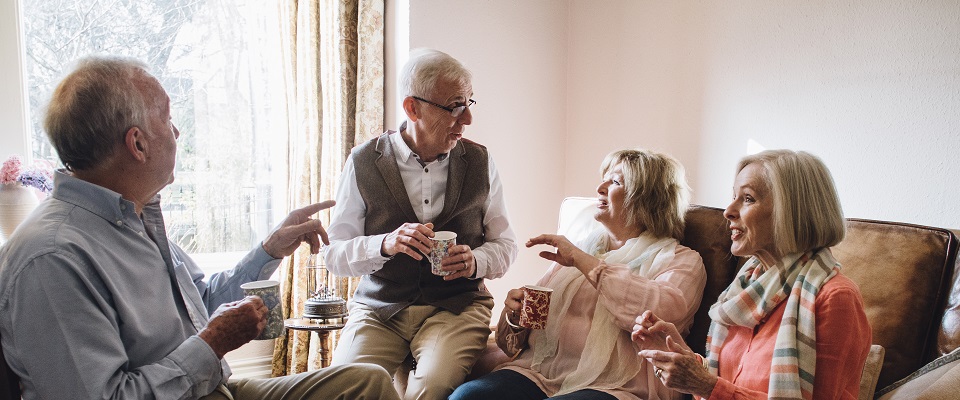There’s a new housing trend that reminds me of the trend that spread across Canada and the U.S. when baby boomers were leaving their parents’ homes behind to launch independent lives far from the suburbs where most of us grew up.
Back then, in the 1960s and 1970s, we called it co-op housing. A group of young adults, like-minded and not keen on living in university residences, usually with radical ideas about changing the world, would get together to rent a house. It was the cheapest way to live while attending school.
In 1971, I moved in with four others in a big old house on Laurier Street in Ottawa’s Centre Town, a few blocks from Parliament Hill, in what was then a run-down neighbourhood that was as “edgy” and inexpensive as you could find in Ottawa.
We christened the structure “Moon House”. There was a large living room with mattresses for sofas, a table for the stereo and milk crates stacked with vinyl records and books. The kitchen was usually in disarray. None of us were big on housekeeping, but we shared all the expenses: the rent, the utilities, the groceries and even the party supplies.
During the entire time I lived at Moon House or the handful of other co-ops I shared with my friends, I never recall an argument about finances. I don’t recall anyone ever being late with the rent or trying to squirm out of divvying up the expenses. I never once locked the door to my bedroom and neither did anyone else.
We did argue about house policy matters, such as how many times a week each of us was required to cook, how often we’d clean the house or shovel the snow, but for the most part, we lived in harmony. When I look back at it, almost fifty years later, I can honestly say it was one of the happiest times in my life. We were young, healthy and idealistic and the inevitable hardships of adulthood hadn’t caught up with us yet.
Often we’d joke that when we grew old we’d get together again in another co-operative, live together, share the expenses and take care of each other. It was a long time ago, but the idea always seemed to me to be a wonderful one, a great alternative to retirement homes or the lonely circumstances facing many older adults.
Today, the idea of retirees living in co-housing has become a reality, and a viable choice for baby boomers who wish to avoid isolation or wish to find a financially sound, but relatively frugal way to grow old.
In its most recent newsletter, the National Institute on Ageing at Ryerson University focuses on co-housing as an alternative to “too much house” or “not enough support” or being confined to “traditional retirement residences that can be expensive and include unnecessary services and amenities or long-term care facilities that limit independence.” None of us wish to be caught up in any of the above scenarios, nor do we wish to find ourselves with limited choices, if we neglect getting support until we’re at a crisis point.
According to the NIA, “that’s where this co-housing comes in, offering independence, a sense of community and tailored amenities, while keeping housing costs affordable and care services accessible. It allows us to age in place in neighbourhoods with family and friends rather than being uprooted to new environs at a time in life when familiarity is appreciated.
The concept is gaining traction around the globe as a potential solution to the challenges of housing affordability, access to health services, and social isolation that many older individuals face. Co-housing helps them age in place while getting the support they need by pairing smaller personal living space with common facilities and shared services. In some cases, shared community management and opportunities to build equity allow residents to maintain both financial and personal independence.”
I know of one group of friends in downtown Toronto that is planning to buy a small building, renovate it for private living units, along with a common space for a shared kitchen, dining room and a space for other social activities. Residents are to participate in shared decision making about everything from financial responsibilities to lending a hand in the kitchen. Sounds fun, right?
Here’s another model that is mentioned in the NIA newsletter: “Solterra Co-Housing is a developer-led network of co-housing projects in purpose-built and renovated homes throughout Ontario. In each property, Solterra allows four to six residents to purchase a percentage interest in the shared home and register as a Tenant in Common on the title/deed.
Each resident has private space (bedroom, sitting area and bathroom) and access to a shared space (kitchen, dining, sitting and outdoor areas). Extra support for housekeeping, shopping and household administration is provided by Solterra In-Home Support Services, which is a separate enterprise.”
The other day I had lunch with Lynn and Bruce, a couple I’ve known for almost 50 years. Lynn and Bruce are the mainstay of our little band from university days, keeping in touch with everyone far and wide and helping out when help is needed. Not unexpectedly the conversation turned to friends who are struggling, mostly with health issues. After lunch, I didn’t feel blue. Instead I was heartened by the active measures being taken to support those who need it right now. In one situation, two friends are flying overseas to help out another friend. The depth of concern, along with the possibilities for future joint efforts makes me believe that ageing doesn’t need to be all about loss.
I couldn’t help but remember our old joke at Moon House about us living together once we grew old and how much fun it would be. There are new alternatives for baby boomers who eschew the tried and true models of how and where to age. What better time to start thinking about them than when we are able to make sound and innovative decisions about what could be the best years of our lives?

























